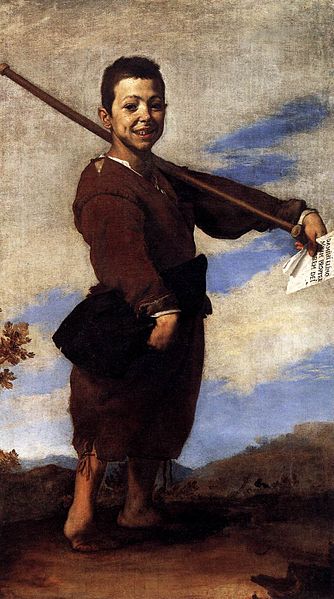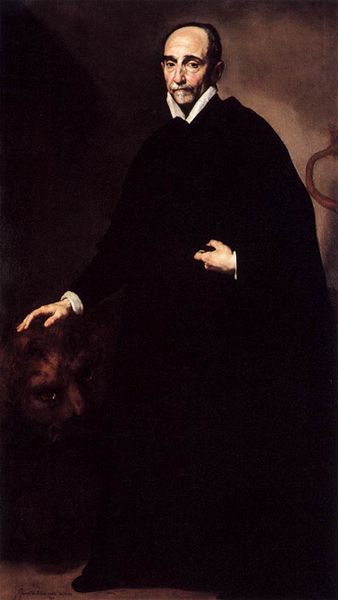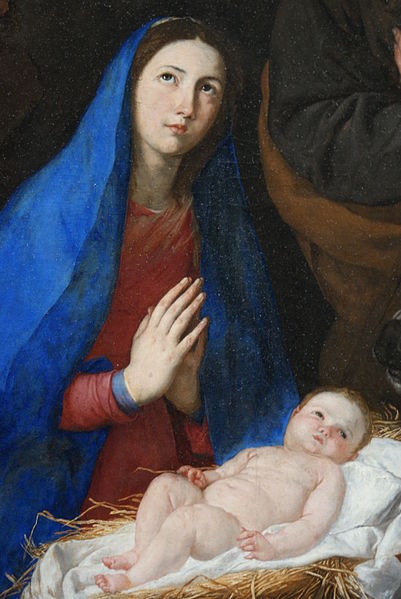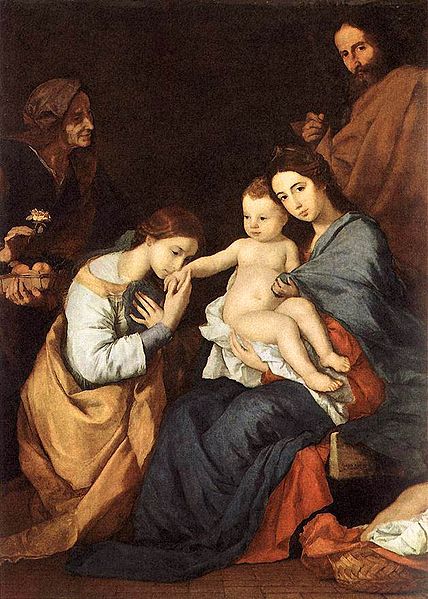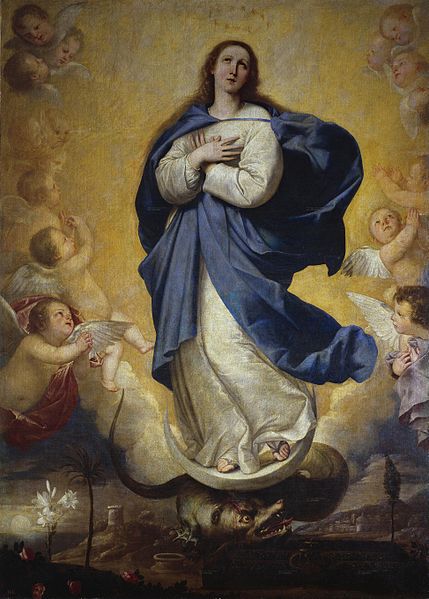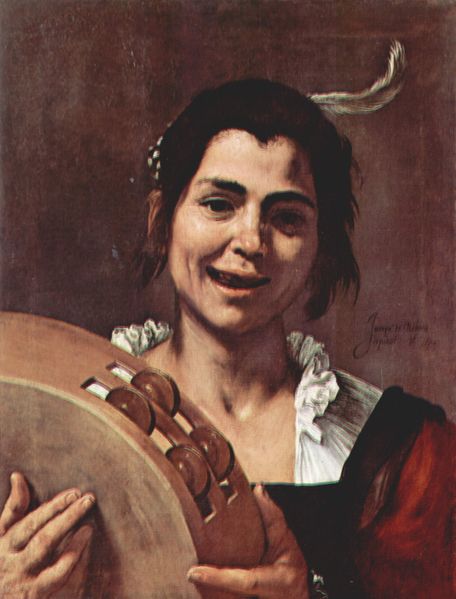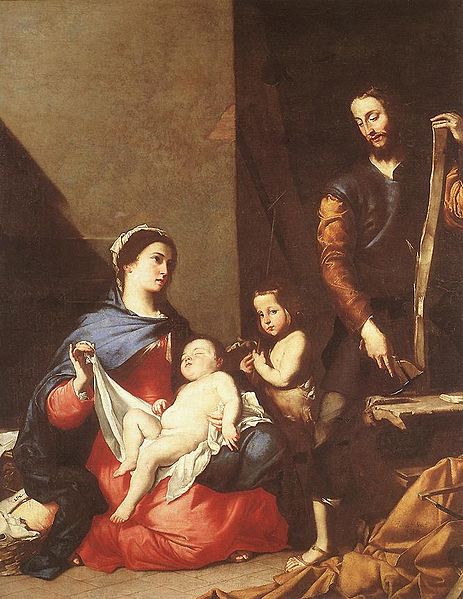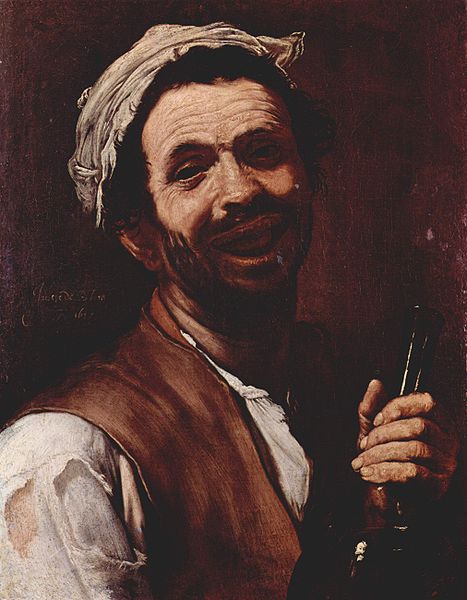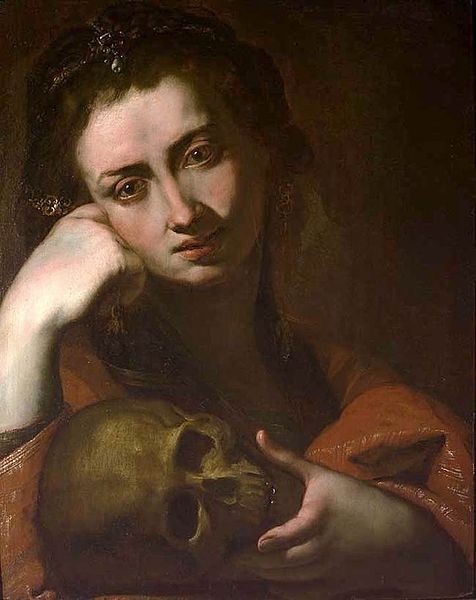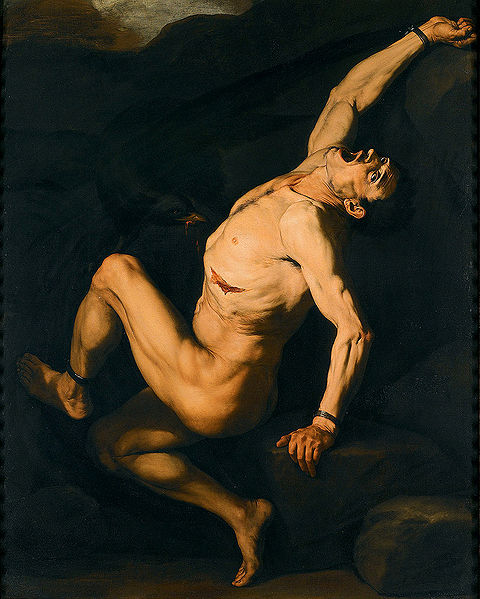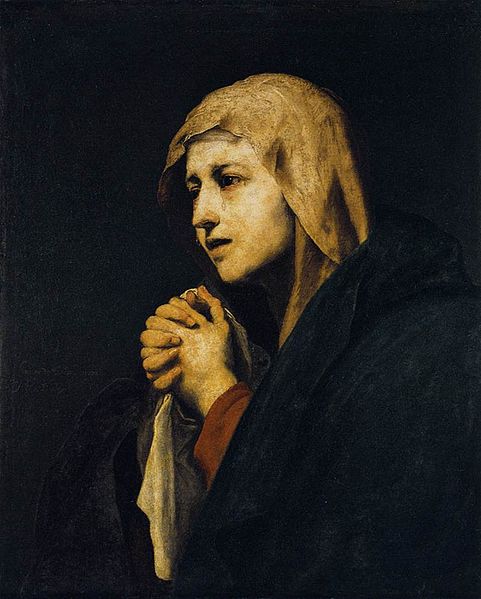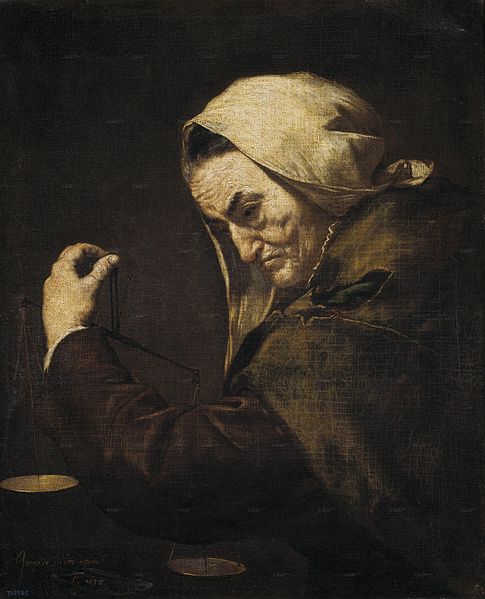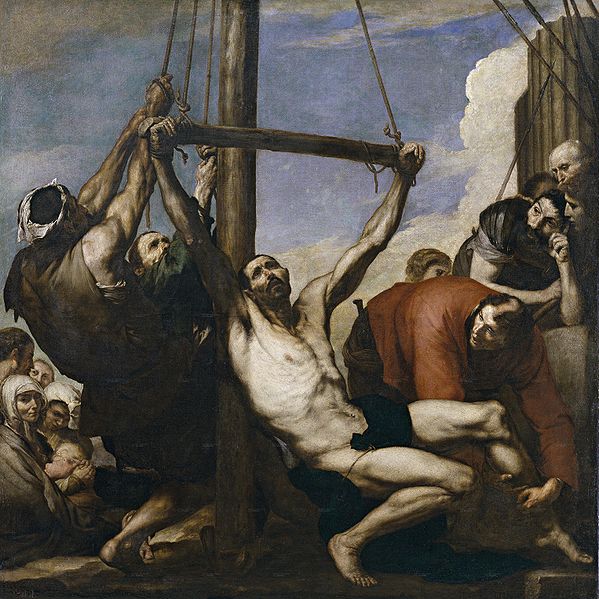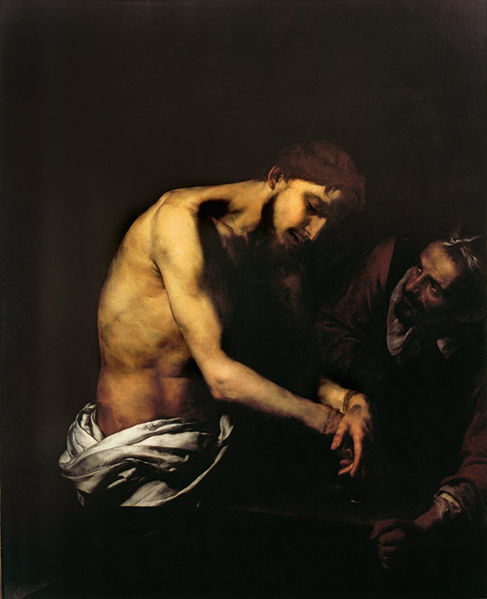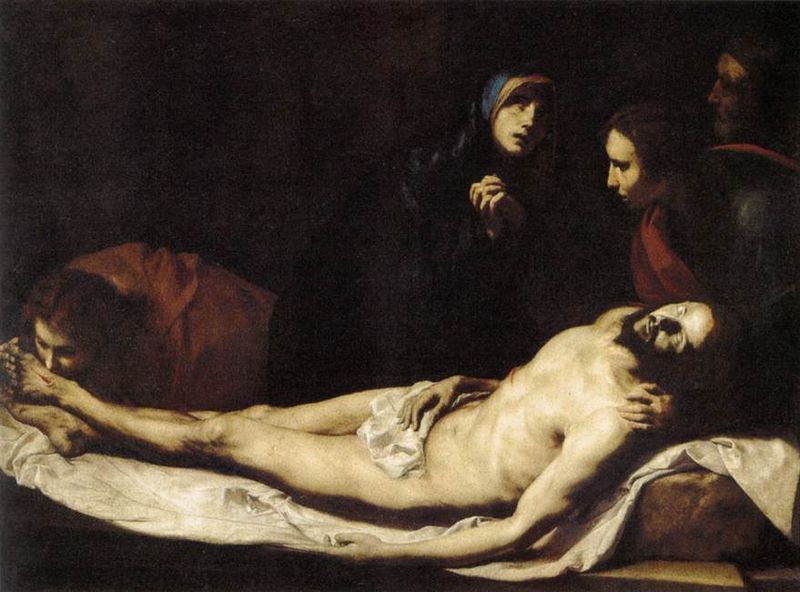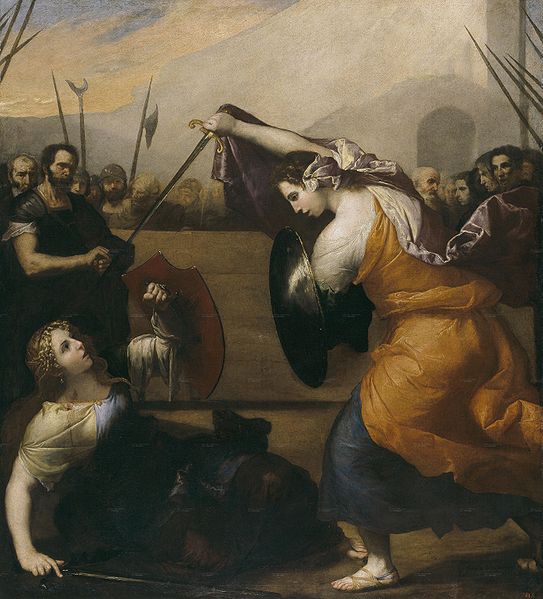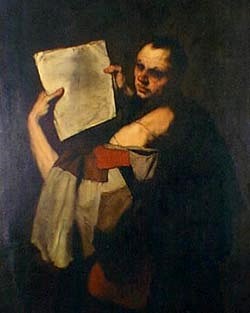<Back to Index>
- Painter Jusepe de Ribera, 1591
PAGE SPONSOR
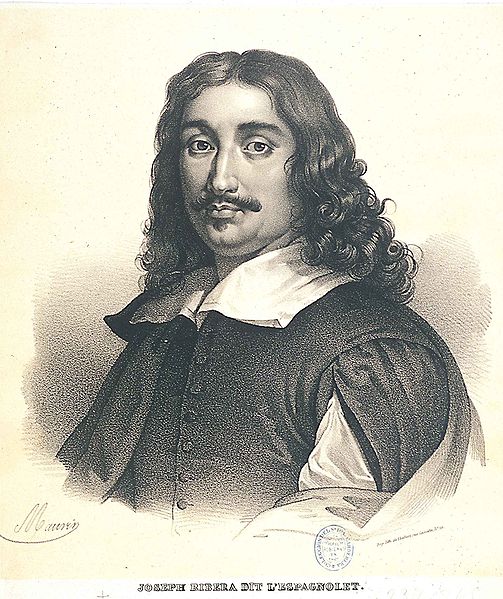
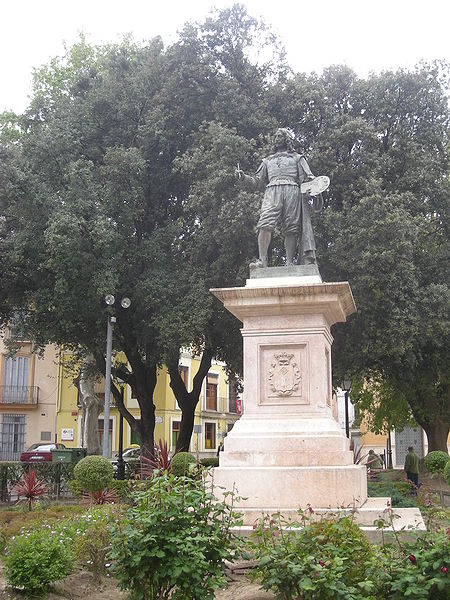
Jusepe de Ribera, probably an italianization of Josep de Ribera (January 12, 1591 – September 2, 1652) was a Spanish Tenebrist painter and printmaker, also known as José de Ribera in Spanish and as Giuseppe Ribera in Italian. He was also called by his contemporaries and early writers Lo Spagnoletto, or "the Little Spaniard". Ribera was a leading painter of the Spanish school, although his mature work was all done in Italy.
Ribera was born near Valencia, Spain at Xàtiva. He was baptized on February 17, 1591. His father was a shoemaker, perhaps on a large scale. His parents intended him for a literary or learned career, but he neglected these studies and is said to have apprenticed with the Spanish painter Francisco Ribalta in Valencia, although no proof of this connection exists. Longing to study art in Italy, he made his way to Rome via Parma, where he is recorded in 1611. According to one source, a cardinal noticed him drawing from the frescoes on a Roman palace facade, and housed him. Roman artists gave him the nickname "Lo Spagnoletto."
He became a follower of Caravaggio's style, one of the so-called Tenebrosi, or shadow - painters, owing to the sharp contrasts of light and shade marking their style. He traveled to Parma, where he completed a painting on the subject of Jacob's Ladder, now in the Prado Museum, Madrid. Ribera lived in Rome from 1613 – 16, on the Via Margutta, and associated with other Caravaggisti, including Gerrit van Honthorst and Hendrik ter Brugghen. He then moved to Naples, to avoid his creditors, according to Giulio Mancini, who described him as extravagant. He may also have already arranged his marriage, to the daughter of a Neapolitan painter, Giovanni Bernardino Azzolino, in November, 1616.
The Kingdom of Naples was
then part of the Spanish Empire, and ruled by a succession of Spanish
Viceroys. Ribera's Spanish nationality aligned him with the small
Spanish governing class in the city, and also with the Flemish merchant
community, from another Spanish territory, who included important
collectors of and dealers in art. Ribera began to sign his work as
"Jusepe de Ribera, Español" or "Jusepe de Ribera, Spaniard". He
was able to quickly attract the attention of the Viceroy, the Duke of Osuna, also recently arrived, who gave him a number of major commissions, which showed the influence of Guido Reni.
The period after Osuna was recalled in 1620 seems to have been difficult. Few paintings survive from 1620 to 1626; but this was the period in which most of his best prints were produced. These were at least partly an attempt to attract attention from a wider audience than Naples. His career picked up in the late 1620s, and he was accepted as the leading painter in Naples thereafter. Although Ribera never returned to Spain, many of his paintings were taken back by returning members of the Spanish governing class, for example the Duke of Osuna, and his etchings were brought to Spain by dealers. His influence can be seen in Velázquez, Murillo, and most other Spanish painters of the period.
He has been portrayed as selfishly protecting his prosperity, and is reputed to have been the chief in the so-called Cabal of Naples, his abettors being a Greek painter, Belisario Corenzio and the Neapolitan, Giambattista Caracciolo. It is said this group aimed to monopolize Neapolitan art commissions, using intrigue, sabotage of work in progress, and even personal threats of violence to frighten away outside competitors such as Annibale Carracci, the Cavalier d'Arpino, Reni, and Domenichino. All of them were invited to work in Naples, but found the place inhospitable. The cabal ended at the time of Caracciolo's death in 1641.
According to the RKD he is listed as a pupil of Ribalta and in turn his own pupils were Enrico Fiammingo, Francesco Fracanzano, Luca Giordano, and Bartelomeo Passante. He was followed by Giuseppe Marullo and he influenced the painters Agostino Beltrano, Hendrick van Someren, Paolo Domenico Finoglio and Pietro Novelli.
From
1644, Ribera seems to have suffered serious ill health, which greatly
reduced his ability to work himself, although his workshop continued to
produce. In 1647-8, during the Masaniello rising
against Spanish rule, he felt forced to take refuge with his family in
the palace of the Viceroy for some months. In 1651 he sold the large
house he had owned for many years, and when he died on September 2, 1652
he was in serious financial difficulties. His daughter had married in
about 1644 a Spanish nobleman in the administration, who died soon
after.
In his earlier style, founded sometimes on Caravaggio and sometimes on the wholly diverse method of Correggio, the study of Spanish and Venetian masters can be traced. Along with his massive and predominating shadows, he retained from first to last a great strength in local coloring. His forms, though ordinary and sometimes coarse, are correct; the impression of his works gloomy and startling. He delighted in subjects of horror. In the early 1630s his style changed away from strong contrasts of dark and light to a more diffused and golden lighting, as can be seen in "The Clubfoot" of 1642. Salvator Rosa and Luca Giordano were his most distinguished followers, who may have been his pupils; others were also Giovanni Do, Enrico Fiammingo, Michelangelo Fracanzani, and Aniello Falcone, who was the first considerable painter of battle pieces.
Among Ribera's principal works could be named "St Januarius Emerging
from the Furnace" in the cathedral of Naples; the "Descent from the
Cross" in the Certosa, Naples, the "Adoration of the Shepherds" (a late
work, 1650), now in the Louvre; the "Martyrdom of St Bartholomew" in the Prado;
and the "Pieta" in the sacristy of San Martino, Naples. His mythologic
subjects are often as violent as his martyrdoms: for example, "Apollo
and Marsyas", with versions in Brussels and Naples, or the "Tityus" in the Prado . The Prado and Louvre contain numerous of his paintings; the National Gallery, London, three. He executed several fine male portraits and a self portrait. He was an important etcher, the most significant Spanish printmaker before Goya, producing about forty prints, nearly all in the 1620s.
